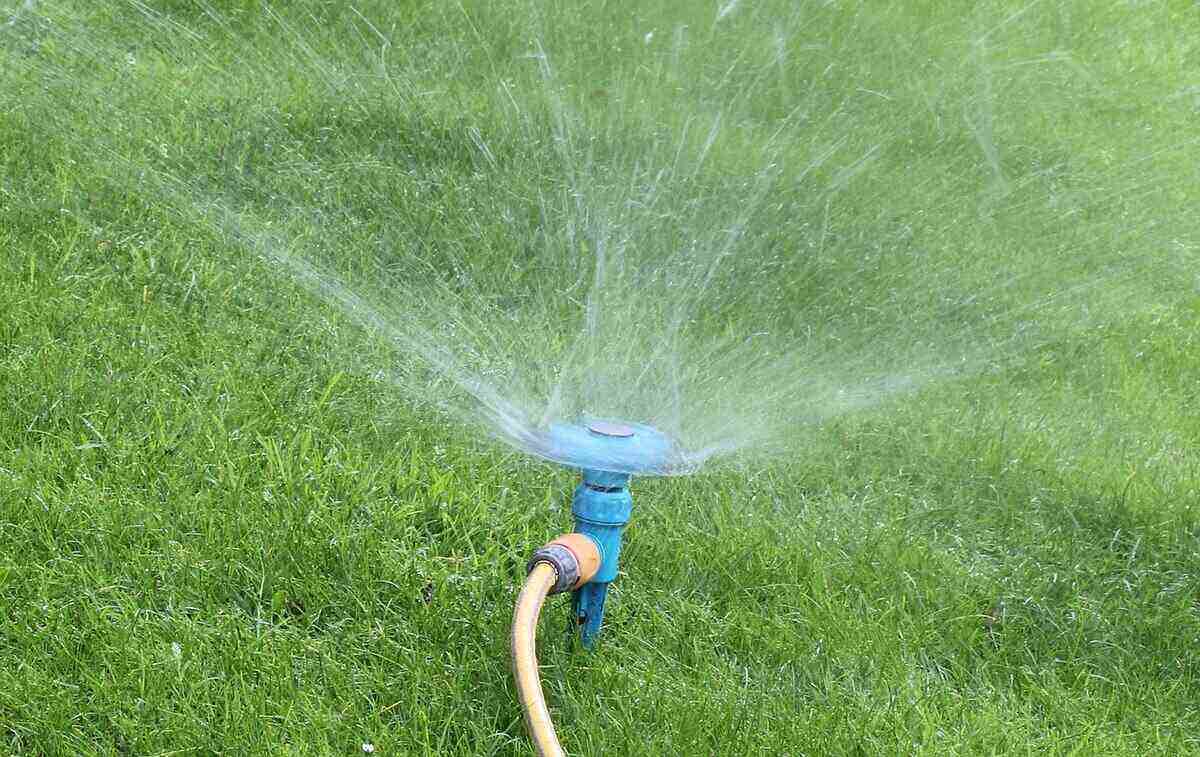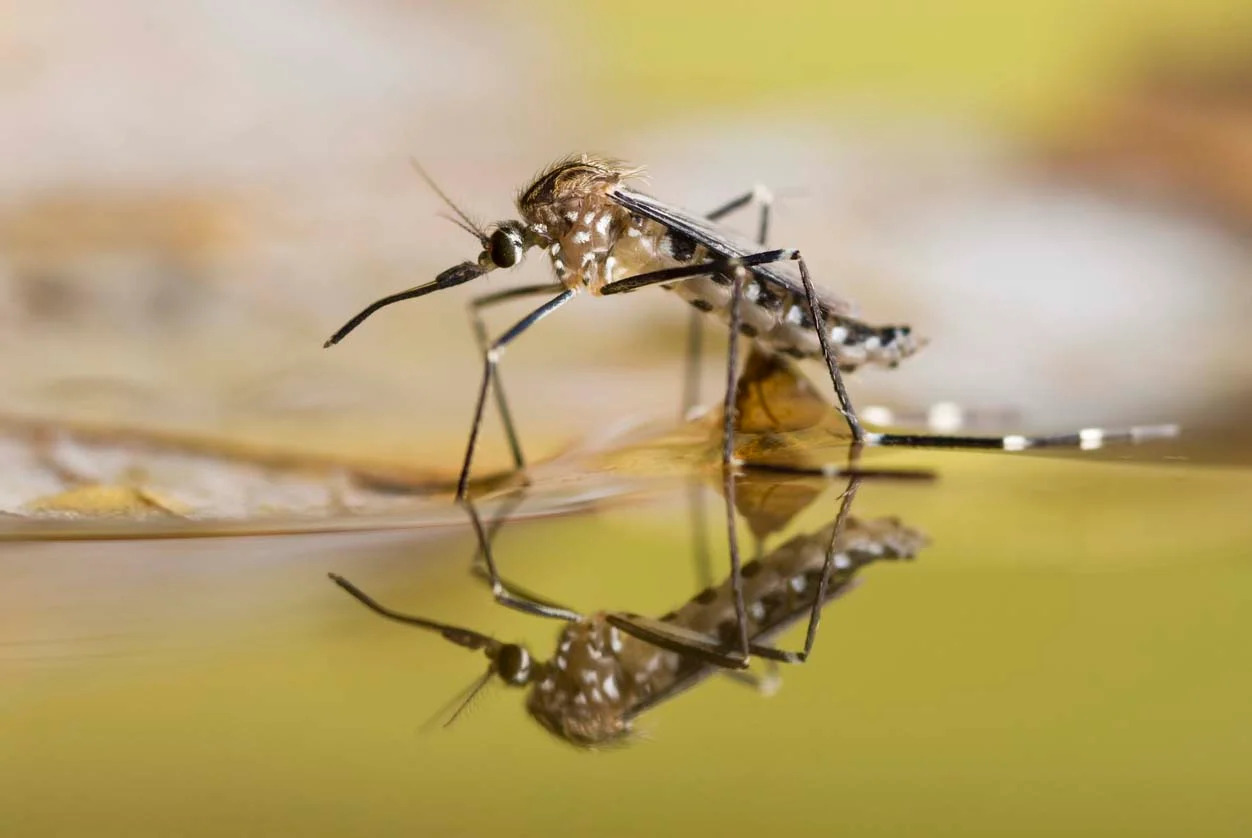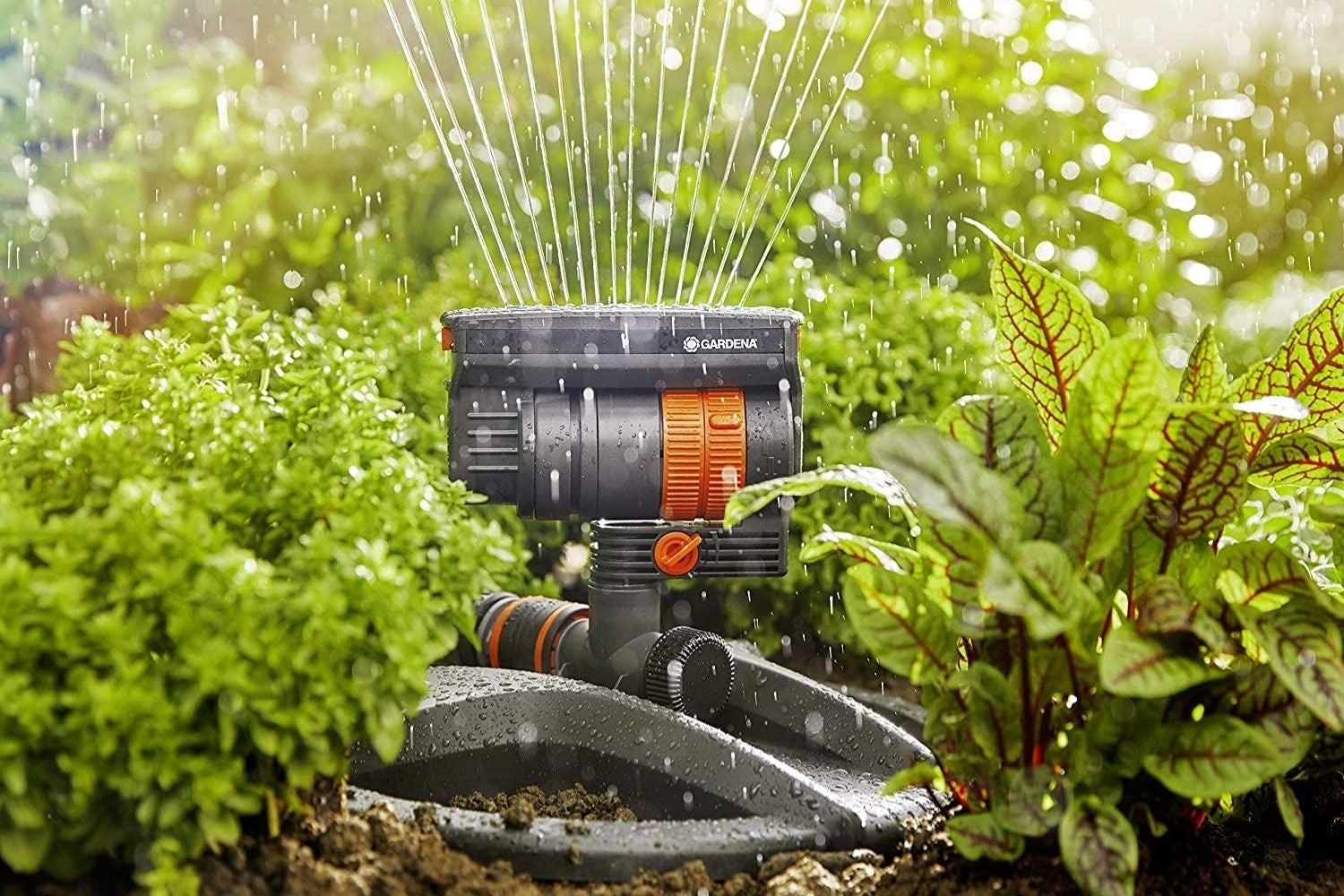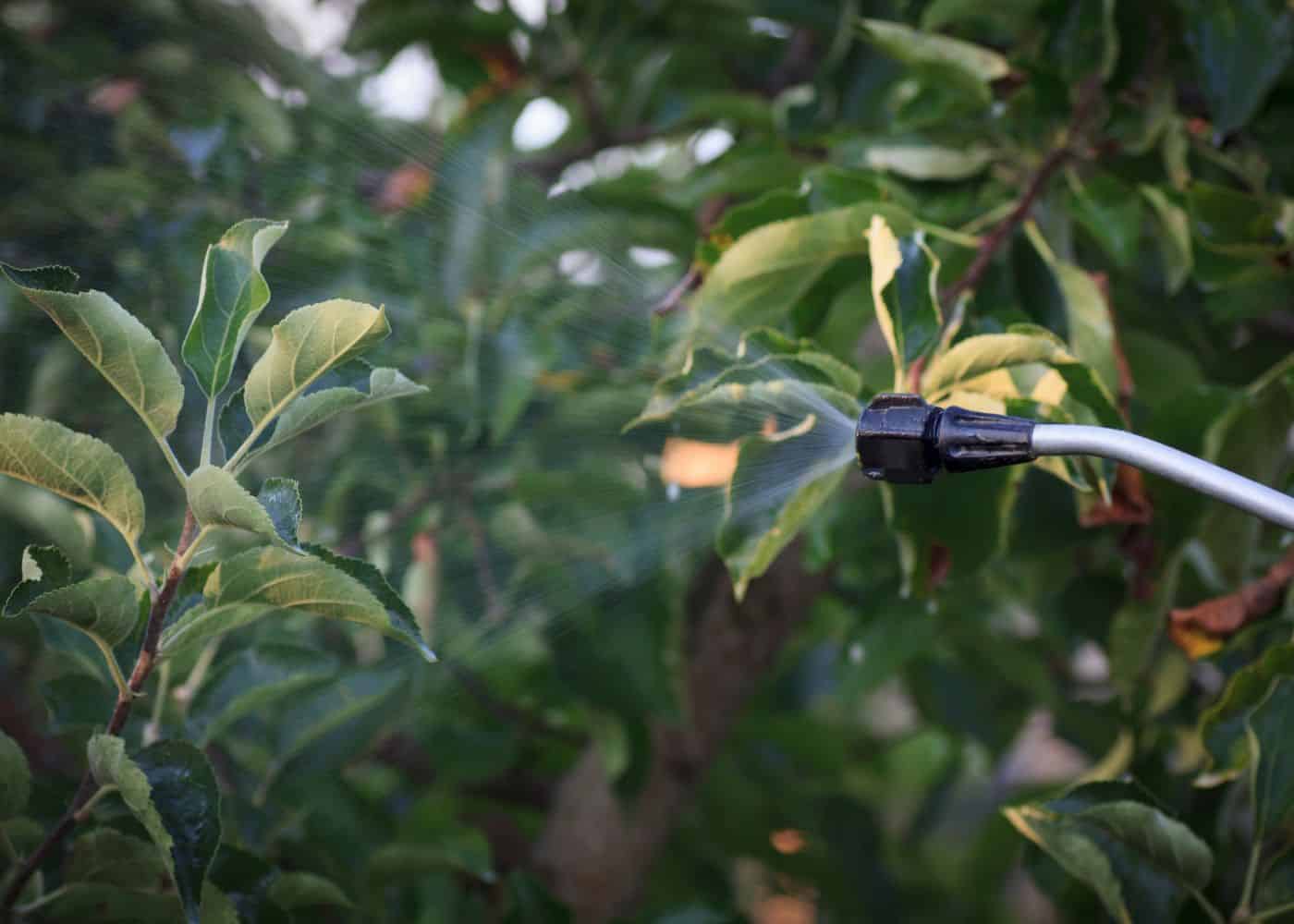Home>Gardening News and Trends>Latest News>How Does Spray Irrigation Work
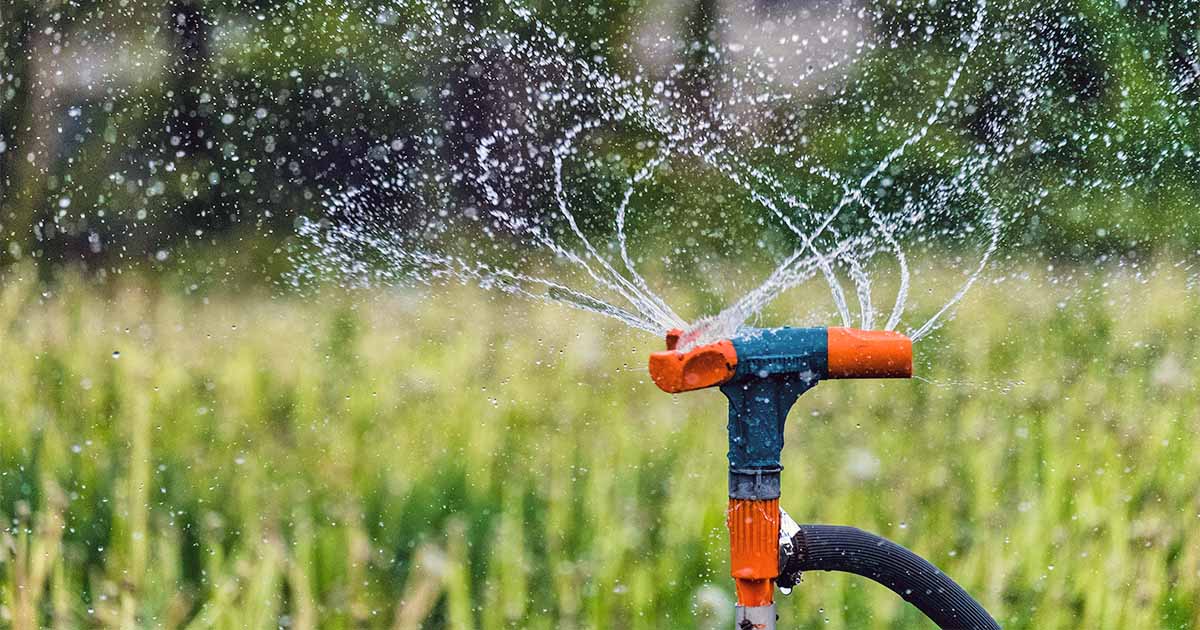

Latest News
How Does Spray Irrigation Work
Modified: January 22, 2024
Learn all about spray irrigation and how it works. Stay updated with the latest news in the field.
(Many of the links in this article redirect to a specific reviewed product. Your purchase of these products through affiliate links helps to generate commission for Chicagolandgardening.com, at no extra cost. Learn more)
Table of Contents
Introduction
Spray irrigation is a widely used irrigation method that delivers water to crops in the form of fine droplets or mist. It is an efficient and effective way to provide plants with the necessary moisture they need to grow and thrive. This system utilizes a network of pipes, spray heads, and a pumping system to evenly distribute water over a designated area. Spray irrigation is commonly employed in agricultural fields, nurseries, gardens, and even in residential landscapes.
The main objective of spray irrigation is to mimic natural rainfall by evenly distributing water droplets across the plants’ root zone. The system offers numerous benefits, including precision water application, minimal water loss due to evaporation and runoff, and the ability to regulate the water application rate based on crop needs. Through the proper design, operation, and maintenance of spray irrigation systems, farmers and landscape owners can optimize water usage and ensure optimal plant growth.
This article will provide an in-depth overview of how spray irrigation works, discuss its components, explain the operation of the system, and highlight its advantages and disadvantages. Whether you are a farmer looking to improve irrigation practices or a homeowner interested in efficient landscape watering, understanding the fundamentals of spray irrigation will help you make informed decisions to maximize plant health and conserve water resources.
Components of Spray Irrigation System
A spray irrigation system consists of several essential components that work together to ensure efficient and uniform water distribution. Understanding these components is crucial for designing, installing, and maintaining a successful spray irrigation system. The main components of a spray irrigation system include the pumping system, water source, filters, distribution network, and spray heads or nozzles.
1. Pumping System: The pumping system is responsible for supplying water to the spray irrigation system. It typically consists of a pump, motor, and control panel. The pump draws water from the water source, such as a well, pond, or reservoir, and delivers it to the spray system at the desired pressure.
2. Water Source: The water source provides the necessary water supply for the irrigation system. It can vary depending on the location and availability of water resources. Common water sources include wells, rivers, lakes, and municipal water supplies.
3. Filters: Filters are essential components of a spray irrigation system as they prevent clogging of the spray heads or nozzles. They remove debris, sediment, and other particles from the water before it reaches the distribution network. Common types of filters used in spray irrigation systems include screen filters, disc filters, and sand filters.
4. Distribution Network: The distribution network consists of pipes and fittings that carry water from the pumping system to the spray heads or nozzles. It is designed to deliver water uniformly to the entire irrigated area. The size and layout of the distribution network depend on factors such as the size of the area to be irrigated and the water application requirements of the plants.
5. Spray Heads or Nozzles: The spray heads or nozzles are the components responsible for converting the pressurized water into fine droplets and distributing them over the plants. They come in various types, such as fixed spray heads, rotating nozzles, and micro-sprinklers. The selection of the appropriate spray heads or nozzles depends on factors such as the desired application rate, water distribution pattern, and the specific requirements of the crops or plants being irrigated.
These components work together to ensure the proper functioning of a spray irrigation system. The pump supplies water to the system, which is then filtered to remove any impurities. The distribution network carries the filtered water to the spray heads or nozzles, which disperse the water in the form of fine droplets over the plants’ root zone.
Understanding each component’s role is vital for system design and maintenance. Proper selection, installation, and regular maintenance of these components will ensure the efficient operation and longevity of the spray irrigation system.
Pumping System
The pumping system is a crucial component of a spray irrigation system that is responsible for supplying water to the system at the desired pressure. It consists of a pump, motor, and control panel, working together to draw water from the water source and deliver it to the distribution network. Understanding the pumping system is essential for ensuring adequate water flow and pressure, which directly affects the system’s overall efficiency.
Pump Types: There are several types of pumps commonly used in spray irrigation systems. The selection of the pump depends on factors such as water source characteristics, required flow rate, and pressure. The two most common types of pumps are centrifugal and submersible pumps.
Centrifugal Pumps: Centrifugal pumps are widely used in spray irrigation systems due to their high efficiency and versatility. These pumps use an impeller to create centrifugal force, which increases water velocity and creates pressure. They are suitable for pumping water from various water sources, including wells, rivers, and reservoirs.
Submersible Pumps: Submersible pumps are primarily used when the water source is located at a significant depth, such as in a borehole or well. These pumps are designed to be submerged in water, allowing them to pump water directly from the source without the need for priming. Submersible pumps are highly efficient and reliable, making them ideal for deep water sources.
Motor: The pump is typically powered by an electric motor. The motor’s power and specifications depend on the pump’s size, flow rate, and pressure requirements. It is crucial to choose a motor that matches the pump’s power requirements to ensure optimal performance and longevity.
Control Panel: The control panel regulates the pump’s operation and ensures proper functioning of the entire pumping system. It consists of various components, including pressure switches, electrical circuits, and control devices. The control panel allows for automatic control of the pump, such as starting and stopping based on water demand or pressure fluctuations.
Pressure Regulation: Maintaining consistent pressure within the spray irrigation system is essential for efficient water distribution. Pressure regulation devices, such as pressure regulators, pressure tanks, and pressure gauges, are used to control and monitor the water pressure. These devices help prevent overpressure or underpressure situations, ensuring that the spray heads or nozzles deliver water uniformly across the irrigated area.
Proper design, installation, and maintenance of the pumping system are vital for a spray irrigation system’s overall performance. It is important to consider factors such as water source characteristics, desired flow rate and pressure, and system load requirements when selecting the appropriate pump and motor. Regular inspection and maintenance of the pumping system are necessary to identify and address any issues promptly, ensuring optimal system performance and efficient water delivery.
Water Source
The water source is a vital component of a spray irrigation system as it provides the necessary water supply for irrigation. The choice of water source depends on factors such as availability, quality, and proximity to the irrigated area. Understanding the characteristics of the water source is crucial for ensuring efficient irrigation and maintaining plant health.
Types of Water Sources: There are various types of water sources commonly used in spray irrigation systems:
Groundwater: Groundwater, obtained from wells or boreholes, is a reliable and widely used water source for irrigation. It is typically extracted using pumps and often requires water quality testing to ensure suitability for irrigation purposes.
Surface Water: Surface water, such as rivers, lakes, or reservoirs, can be used as a water source for spray irrigation. It may require additional filtration or treatment to remove impurities, sediment, or contaminants that could clog the irrigation system or harm the plants.
Rainwater Harvesting: In areas with limited water resources, rainwater harvesting can be an effective and sustainable water source for spray irrigation. Rainwater is collected and stored in tanks or reservoirs, providing a valuable source of water during dry periods.
Water Quality: The quality of the water source is an important consideration for spray irrigation. Water quality affects both plant health and the longevity of the irrigation system components. Factors to consider include the presence of suspended solids, minerals, organic matter, and the pH level of the water. Water quality testing should be conducted to identify any potential issues and implement appropriate water treatment measures if necessary.
Water Availability: The availability of water from the chosen source is another critical factor. It is important to ensure that the water source can consistently meet the irrigation demands, especially during peak watering periods. Adequate water supply is essential to prevent water stress in plants and maintain optimal growth and productivity.
Water Source Sustainability: Considering the sustainability of the water source is vital for long-term irrigation planning. It is important to assess the water availability in the region, consider any environmental impacts, and implement water conservation measures to ensure the sustainable use of the water source.
Proper management of the water source is essential for spray irrigation systems. Regular monitoring of water quality, adequacy of water supply, and sustainability of the water source will contribute to efficient water use, optimal plant growth, and the longevity of the irrigation system.
Filters
Filters are an essential component of a spray irrigation system as they prevent clogging of the spray heads or nozzles and help maintain consistent water flow and distribution. They remove debris, sediment, and other particles from the water before it reaches the distribution network. Choosing the right type of filter and regular maintenance are crucial for ensuring optimal system performance and preventing costly issues.
Types of Filters: There are several types of filters commonly used in spray irrigation systems:
Screen Filters: Screen filters are the most common type of filter used in spray irrigation systems. They consist of a mesh screen that traps particles and debris as water passes through. The screen can be easily removed and cleaned to maintain proper filtration efficiency.
Disc Filters: Disc filters use a stack of grooved discs to trap and remove particles from the water. The discs can be cleaned by backwashing or manually disassembling the filter for cleaning. Disc filters are effective at removing fine particles and are commonly used in areas with water sources containing significant amounts of sediment.
Sand Filters: Sand filters utilize a bed of sand or other granular media for efficient particle removal. Water passes through the sand bed, while the particles are trapped and removed. Sand filters need periodic backwashing to clean the media and maintain proper filtration performance.
Filter Sizing: Proper filter sizing is crucial for effective filtration. The filter size should match the system’s flow rate and water volume requirements. Undersized filters can lead to reduced flow and increased pressure loss, while oversized filters may not effectively remove smaller particles. Consulting with an irrigation professional can help determine the appropriate filter size for the specific system requirements.
Maintenance: Regular maintenance is necessary to ensure efficient filter performance. Filters should be regularly inspected and cleaned to remove accumulated debris and sediment. The frequency of cleaning depends on the water quality and the amount of particles present. It is recommended to follow the manufacturer’s guidelines for cleaning and maintenance to maximize filter effectiveness.
Prevention of Biofouling: Biofouling, the growth of microorganisms or algae on the filter surfaces, can reduce filter efficiency and impair water flow. Using proper disinfection or chemical treatment methods can help prevent biofouling and maintain optimal filter performance.
Filters play a crucial role in maintaining the functionality and efficiency of a spray irrigation system. Regular inspection, cleaning, and appropriate maintenance practices will help prevent clogging, ensure consistent water flow, and optimize water distribution throughout the irrigated area.
Distribution Network
The distribution network is a critical component of a spray irrigation system that carries water from the pumping system to the spray heads or nozzles. It plays a crucial role in delivering water uniformly and efficiently to the entire irrigated area. Proper design and installation of the distribution network are essential for optimal water distribution and effective irrigation management.
Pipes and Fittings: The distribution network consists of pipes and fittings that transport water from the pumping system to the spray heads or nozzles. The pipes can be made of materials such as PVC (polyvinyl chloride), polyethylene, or galvanized steel. The selection of pipe material depends on factors such as cost, durability, and the specific needs of the irrigation system.
Pipe Sizing: Proper pipe sizing is crucial for maintaining adequate water flow and pressure throughout the distribution network. Undersized pipes can result in reduced water flow and increased friction losses, while oversized pipes may lead to higher costs and inefficient water distribution. The pipe size should be determined based on factors such as the desired flow rate, pressure requirements, and the length and layout of the irrigation system.
Layout and Spacing: The layout and spacing of the distribution network depend on the size and shape of the irrigated area, the water requirements of the plants, and the desired application rate. The network should be designed to ensure uniform water distribution across the entire area, minimizing dry spots and water wastage. The spacing between pipes and spray heads or nozzles should be determined based on factors such as the water distribution pattern, spray radius, and plant spacing.
Pressure Regulation: Maintaining consistent pressure within the distribution network is crucial for effective water distribution. Pressure regulation devices, such as pressure regulators or control valves, can be installed at strategic points to ensure optimal pressure at the spray heads or nozzles. This helps prevent over-watering or under-watering of plants and ensures uniform water distribution across the irrigated area.
System Layout and Zoning: The distribution network can be divided into zones to efficiently manage water usage and cater to different plant or crop requirements. Zoning allows for precise control of water application to specific areas, optimizing water usage and managing different irrigation schedules or needs. Each zone may have its own valve or control mechanism to regulate water flow and distribution.
Proper design, installation, and regular maintenance of the distribution network are essential for effective spray irrigation. Regular inspection of pipes for leaks or damage, cleaning of clogged or blocked spray heads or nozzles, and monitoring water flow and distribution patterns are important tasks to ensure the network operates optimally and delivers water accurately to the plants.
Spray Heads or Nozzles
Spray heads or nozzles are vital components of a spray irrigation system as they are responsible for converting pressurized water into a fine mist or droplets and evenly distributing them over the plants. They play a crucial role in determining the water application rate, coverage area, and distribution pattern. Understanding the different types of spray heads or nozzles and their proper selection is essential for efficient water distribution and optimal plant growth.
Types of Spray Heads or Nozzles: There are several types of spray heads or nozzles commonly used in spray irrigation systems:
Fixed Spray Heads: Fixed spray heads are stationary nozzles that deliver a fixed spray pattern. They are often used in smaller landscapes or residential areas. These nozzles come in various spray patterns, such as full circle, half circle, or quarter circle, allowing for precise water distribution based on the area’s shape and plant requirements.
Rotating Nozzles: Rotating nozzles have a rotating mechanism that distributes water over a larger area. They provide a more uniform distribution and are suitable for larger areas, such as sports fields or agricultural fields. These nozzles often have adjustable rotation speed and radius, allowing for customized water application based on the specific needs of the area being irrigated.
Micro-sprinklers: Micro-sprinklers emit a fine mist or spray, providing gentle and precise water distribution. These nozzles are often used in nurseries, greenhouses, or areas with smaller plants. They can be adjustable to deliver different water volumes and patterns to accommodate the specific requirements of various plant species.
Selection and Placement: The selection of the appropriate spray heads or nozzles depends on factors such as the desired application rate, water distribution pattern, and the specific requirements of the crops or plants being irrigated. Different plants may have varying water needs, and selecting nozzles that match those needs ensures efficient water usage. Proper placement of spray heads or nozzles is also crucial to avoid over-watering or under-watering of plants and ensure uniform water distribution across the irrigated area.
Water Application Rate: Spray heads or nozzles have different water application rates, typically measured in gallons per minute (GPM) or liters per hour (LPH). The water application rate determines how much water is delivered to the plants over a specific time period. Understanding the water requirements of the plants and selecting spray heads or nozzles with appropriate application rates is vital for efficient irrigation management and preventing water wastage.
Adjustability and Maintenance: Adjustability is an important feature to consider when selecting spray heads or nozzles. Being able to adjust the flow rate, spray pattern, or radius allows for customization and adaptation to changing plant or environmental needs. Regular maintenance, such as cleaning or replacing clogged nozzles, ensures their proper functioning and uniform water distribution.
By selecting the right spray heads or nozzles and properly maintaining them, a spray irrigation system can efficiently deliver water to plants, optimize water usage, and promote healthy growth and development.
Operation of Spray Irrigation System
The operation of a spray irrigation system involves several key steps to ensure efficient water distribution and optimal plant growth. Understanding the operational processes is vital for effectively managing the system and maximizing its effectiveness. Here are the essential elements of operating a spray irrigation system:
1. Timing: Determining the appropriate timing for irrigation is crucial. The timing depends on factors such as plant needs, weather conditions, and soil moisture levels. It is essential to water the plants when they require it most and to avoid irrigating during periods of excessive rainfall or high winds.
2. Water Application Rate: Controlling the water application rate is essential to prevent over-watering or under-watering. The water application rate depends on the plants’ water requirements, soil type, and climate. It can be regulated by adjusting the flow rate at the spray heads or nozzles or by managing the irrigation duration.
3. Irrigation Duration: The duration of irrigation determines how long the spray heads or nozzles will operate. It depends on factors such as plant needs, soil moisture levels, and the efficiency of the irrigation system. It is important to consider factors like soil drainage and water infiltration rates to avoid waterlogging or excessive runoff.
4. Monitoring and Adjusting: Regular monitoring of the irrigation system is necessary to ensure proper operation and identify any issues. Monitoring includes checking for clogged or damaged spray heads or nozzles, inspecting the distribution network for leaks, and assessing water pressure and flow rate. Adjustments can be made as needed to improve water distribution, coverage, and efficiency.
5. Irrigation Scheduling: Developing an irrigation schedule is essential for managing water usage and ensuring proper plant hydration. The scheduling takes into account factors such as plant needs, soil moisture levels, and weather patterns. Automated irrigation controllers can be used to program and manage the irrigation schedule based on specific parameters and sensor inputs.
6. Water Conservation: Conserving water is an important consideration when operating a spray irrigation system. Practices such as using weather-based irrigation controllers, implementing rain sensors, and properly maintaining the system can help minimize water waste and maximize water efficiency.
7. Regular Maintenance: Regular maintenance of the spray irrigation system is crucial for optimal operation. This includes cleaning and inspecting spray heads or nozzles, checking for leaks or damaged pipes, and ensuring the proper functioning of the pumping system. Regular maintenance helps prevent issues, prolongs the system’s lifespan, and ensures effective water distribution.
Operating a spray irrigation system requires careful attention to timing, water application rate, irrigation duration, and regular monitoring and adjustment. By following these operational practices, it is possible to optimize water usage, promote healthy plant growth, and maintain the longevity of the spray irrigation system.
Water Application Rate
The water application rate plays a crucial role in spray irrigation systems as it determines the amount of water delivered to the plants over a given period. Understanding and controlling the water application rate is essential for efficient water usage, preventing water wastage, and promoting healthy plant growth. Several factors influence the water application rate, including plant needs, soil type, climate, and the design of the irrigation system.
Plant Needs: The water requirements of different plants vary. Factors affecting plant water needs include plant type, growth stage, root depth, and environmental conditions. It is essential to consider the specific water needs of the plants being irrigated to determine the appropriate water application rate.
Soil Type: The soil’s ability to hold and distribute water impacts the water application rate. Sandy soils, for example, have lower water holding capacity and require frequent but shorter irrigation cycles. Clay soils, on the other hand, have higher water holding capacity and can retain more water, allowing for longer intervals between irrigation cycles.
Climate: The prevailing climate conditions, including temperature, humidity, wind, and evaporation rates, affect the water application rate. Higher temperatures and wind speeds increase evaporation rates, leading to higher water loss. Understanding the local climate helps determine the appropriate water application rate to compensate for these environmental factors.
Irrigation System Design: The design of the spray irrigation system, including the type of spray heads or nozzles, determines the water distribution pattern and coverage area. Different nozzles may have varying precipitation rates, which can affect the uniformity of water application. It is important to select appropriate spray heads or nozzles and arrange them properly to ensure even water distribution across the irrigated area.
Regulating the Water Application Rate: There are several methods to control the water application rate in a spray irrigation system. This can include adjusting the flow rate at the spray heads or nozzles, controlling the duration of irrigation cycles, or utilizing technologies like soil moisture sensors or weather-based irrigation controllers. These methods allow for precise control and customization of the water application rate based on the specific needs of the plants and environmental conditions.
Efficient Water Usage: Optimizing the water application rate helps minimize water wastage and promotes efficient water usage. Over-watering not only wastes water but can also lead to leaching of nutrients, waterlogging, and increased disease susceptibility in plants. Under-watering, on the other hand, can result in stress, stunted growth, and decreased crop productivity. Maintaining an appropriate water application rate ensures that plants receive the right amount of water for healthy growth and development.
Achieving an optimal water application rate in a spray irrigation system requires careful consideration of plant needs, soil type, climate conditions, and proper irrigation system design. By regulating and fine-tuning the water application rate, it is possible to optimize water usage, enhance plant health, and achieve sustainable irrigation practices.
Advantages of Spray Irrigation
Spray irrigation is a widely used method of delivering water to crops and landscapes, offering numerous advantages over other irrigation methods. Understanding the benefits of spray irrigation can help farmers, gardeners, and landscape owners make informed decisions about their irrigation systems. Here are some of the key advantages of spray irrigation:
1. Precision Water Application: Spray irrigation allows for precise water application targeting specific areas or plants. The ability to adjust the water application rate, distribution pattern, and coverage area provides flexibility and customization based on different plant needs and growth stages.
2. Uniform Water Distribution: Spray irrigation systems are designed to deliver water uniformly across the irrigated area. This ensures that all plants receive an adequate supply of water, reducing the risk of under-watering or over-watering. Uniform water distribution also promotes consistent plant growth and minimizes the occurrence of dry spots or waterlogged areas.
3. Efficient Water Usage: Spray irrigation systems can be designed to deliver water directly to the plant’s root zone, minimizing water loss due to evaporation and runoff. By providing water only where it is needed, spray irrigation promotes efficient water usage and conservation, particularly when combined with technologies like soil moisture sensors or weather-based controllers.
4. Versatility: Spray irrigation systems are versatile and can be adapted to various landscapes and crop types. They can be used in large agricultural fields, small residential gardens, or commercial landscapes. Spray heads or nozzles come in a variety of types, sizes, and spray patterns, allowing for customization based on specific requirements.
5. Cost-Effective: Spray irrigation systems can be cost-effective in terms of installation and maintenance. The components, such as spray heads or nozzles and pipes, are generally affordable and readily available. Additionally, the ability to regulate water application rates helps optimize water usage and reduce water and energy costs.
6. Time Efficiency: Spray irrigation systems can save time compared to manual watering methods. Once the system is set up and properly programmed, it can operate automatically, reducing the need for labor-intensive watering routines. This is particularly beneficial in larger agricultural settings or landscapes with extensive plantings.
7. Scalability: Spray irrigation systems can easily be scaled up or down to accommodate changing irrigation needs. Whether expanding an agricultural field or adjusting watering requirements in a garden, spray irrigation systems can be easily modified to suit the area’s size and specific irrigation demands.
8. Environmental Benefits: Spray irrigation, when properly managed, can have environmental benefits. By efficiently using water and minimizing runoff, spray irrigation reduces the impact on water resources and prevents soil erosion. It can also reduce the need for chemical fertilizers and pesticides by allowing for targeted application near plant roots.
Overall, spray irrigation offers precision, efficiency, flexibility, and cost-effectiveness, making it a popular choice for irrigation in agricultural, residential, and commercial settings. By harnessing the advantages of spray irrigation, individuals can optimize water usage, promote healthy plant growth, and conserve valuable water resources.
Disadvantages of Spray Irrigation
While spray irrigation offers several advantages, it also has some disadvantages that need to be considered when selecting an irrigation system. Understanding the potential drawbacks of spray irrigation can help individuals make informed decisions and implement measures to mitigate these issues. Here are some of the key disadvantages of spray irrigation:
1. Water Loss Due to Evaporation: Since spray irrigation delivers water in the form of fine droplets or mist, there is a higher risk of water loss through evaporation. Particularly in hot and windy conditions, a significant portion of the water applied may evaporate before reaching the plant’s root zone, reducing the system’s overall efficiency.
2. Vulnerability to Wind Drift: Wind can cause water distribution issues in spray irrigation systems. Strong winds can carry the water droplets away from the desired area, leading to uneven water distribution and potential water wastage. Wind drift can also result in neighboring areas being over-watered, resulting in increased water usage and potential runoff.
3. High Energy Consumption: Spray irrigation systems often require a high-pressure pumping system to deliver water effectively through the spray heads or nozzles. This high-pressure requirement can lead to increased energy consumption, impacting the overall operational costs of the system.
4. Maintenance and Nozzle Clogging: Spray heads or nozzles are prone to clogging due to the presence of sediments, debris, or mineral deposits in the water. Clogging can affect the even distribution of water and require regular maintenance to clean or replace clogged nozzles. Neglecting proper maintenance can result in reduced system performance and water distribution issues.
5. Difficulties in Sloped or Uneven Terrain: Spray irrigation may face challenges when used in sloped or uneven terrain. Gravity can cause water to flow in unintended directions, leading to water pooling or inadequate coverage in certain areas. Additional planning and design considerations, such as using pressure regulating devices, may be required for efficient irrigation on such terrains.
6. Potential for Disease Spread: Spray irrigation can create a moist environment on the plant foliage, which may promote the growth and spread of certain plant diseases. When water droplets remain on the leaves for extended periods, it can provide a favorable environment for fungal or bacterial pathogens to thrive. Proper monitoring and management practices, such as adjusting irrigation timing and avoiding excessive leaf wetness, can help mitigate this risk.
7. Noise and Visual Impact: In some settings, spray irrigation systems can generate noise during operation. This can be audible and disruptive, particularly in residential areas. Additionally, the presence of spray heads or nozzles and associated pipes may have visual impacts on the landscape, affecting the aesthetics of the area.
Despite these disadvantages, it is important to note that many of these issues can be addressed with proper system design, maintenance, and management practices. By considering these drawbacks and implementing appropriate measures, individuals can overcome the challenges associated with spray irrigation and enjoy its benefits.
Maintenance and Troubleshooting Tips
Maintaining and troubleshooting a spray irrigation system is essential to ensure its optimal performance and longevity. Regular maintenance helps prevent issues, maximizes water efficiency, and promotes healthy plant growth. Here are some important maintenance and troubleshooting tips to consider:
1. Regular Inspection: Conduct regular inspections of the entire spray irrigation system. Check for leaks, damaged pipes, clogged nozzles, or malfunctioning spray heads. Detecting and addressing issues early can prevent further damage and water wastage.
2. Clean or Replace Nozzles: Clogged nozzles can lead to uneven water distribution and reduced system performance. Inspect and clean the nozzles on a regular basis to remove any debris, sediment, or mineral deposits that may hinder proper water flow. If cleaning does not resolve the issue, replace the nozzles as needed.
3. Adjust Spray Heads: Regularly check and adjust the spray heads to ensure proper water coverage and distribution. Misaligned spray heads can result in dry spots or over-watering in certain areas. Proper alignment and adjustment can help achieve uniform water distribution across the irrigated area.
4. Check Pressure and Flow: Monitor the water pressure and flow rate in the system. Low pressure may indicate pump or pipe issues, while high pressure can lead to nozzle or distribution network damage. Adjust pressure regulators or control valves as needed to maintain desired pressure levels and ensure efficient water distribution.
5. Monitor Soil Moisture Levels: Regularly monitor soil moisture levels to ensure plants are receiving the appropriate amount of water. Use moisture sensors or conduct manual soil moisture tests to determine irrigation timing and duration. Avoid over-irrigation, which can lead to waterlogging and root rot, or under-irrigation, which can cause plant stress and reduced productivity.
6. Fertilizer Application: Coordinate fertilizer application with the irrigation schedule. Adjust the timing and frequency of fertilizer application to align with water availability and plant needs. Avoid applying fertilizers immediately before or after irrigation to prevent nutrient leaching or uneven distribution due to water flow.
7. Winterization: Properly winterize the spray irrigation system in colder climates to prevent freeze damage. Drain or blow out water from the pipes to prevent freezing and bursting. Store any removable components, such as nozzles or spray heads, in a safe and dry place to prevent damage during the winter months.
8. Monitor Water Quality: Regularly test and monitor the quality of the water source for any signs of contamination or changes in pH levels. Poor water quality can lead to clogged nozzles, damaged pipes, and potential plant health issues. Implement appropriate water treatment measures, such as filtration or disinfection systems, if necessary.
9. Professional Assistance: Seek professional assistance when needed. If you encounter persistent issues or complex problems with your spray irrigation system, consider consulting an irrigation professional who can provide expertise and guidance for troubleshooting and maintenance.
Regular maintenance, monitoring, and troubleshooting are vital for a well-functioning spray irrigation system. Following these tips will help ensure efficient water usage, promote healthy plant growth, and extend the lifespan of the system.
Conclusion
Spray irrigation is a widely used method that offers precise water application, uniform water distribution, and efficient water usage. Understanding the components and operation of a spray irrigation system is crucial for successful irrigation management. The pumping system, water source, filters, distribution network, and spray heads or nozzles all play essential roles in ensuring optimal water distribution to plants.
Despite its numerous advantages, spray irrigation does have some potential drawbacks, such as water loss due to evaporation, wind drift, and maintenance requirements. However, with proper system design, maintenance practices, and troubleshooting techniques, these challenges can be addressed effectively.
Regular maintenance, including inspection, cleaning, and adjustment of spray heads or nozzles, is necessary to prevent issues and ensure efficient water distribution. Monitoring soil moisture levels, checking for leaks or clogs, and managing water application rates will help optimize water usage and promote healthy plant growth.
It is also important to consider the specific water needs of plants, soil type, climate conditions, and water source sustainability when operating a spray irrigation system. By making informed decisions and implementing appropriate measures, individuals can mitigate potential drawbacks and maximize the benefits of spray irrigation.
Overall, spray irrigation provides a versatile, precise, and efficient method for delivering water to crops, gardens, and landscapes. With proper system design, regular maintenance, and responsible water management, spray irrigation can contribute to sustainable agriculture practices, conserve water resources, and ensure the health and vitality of plants.
